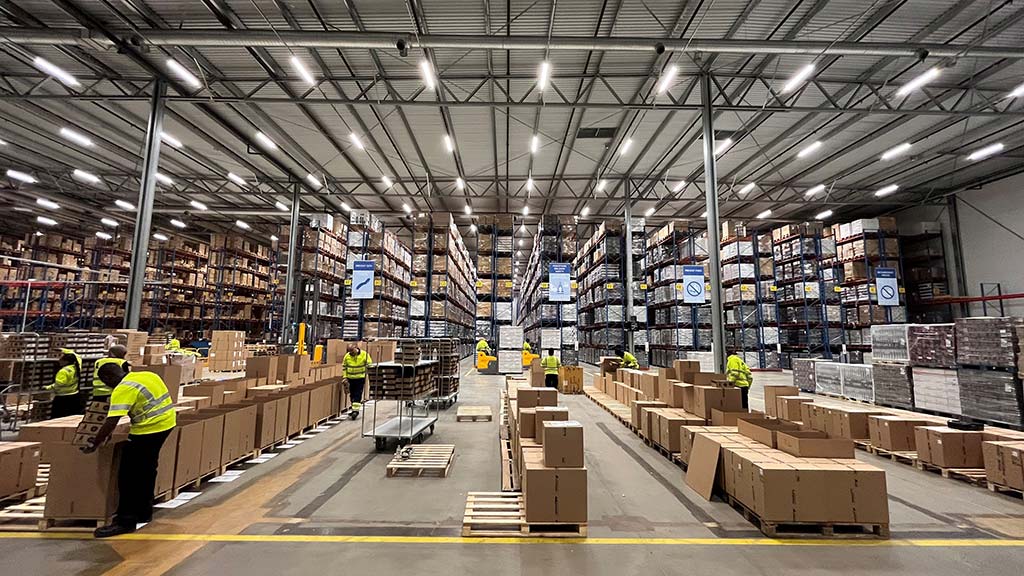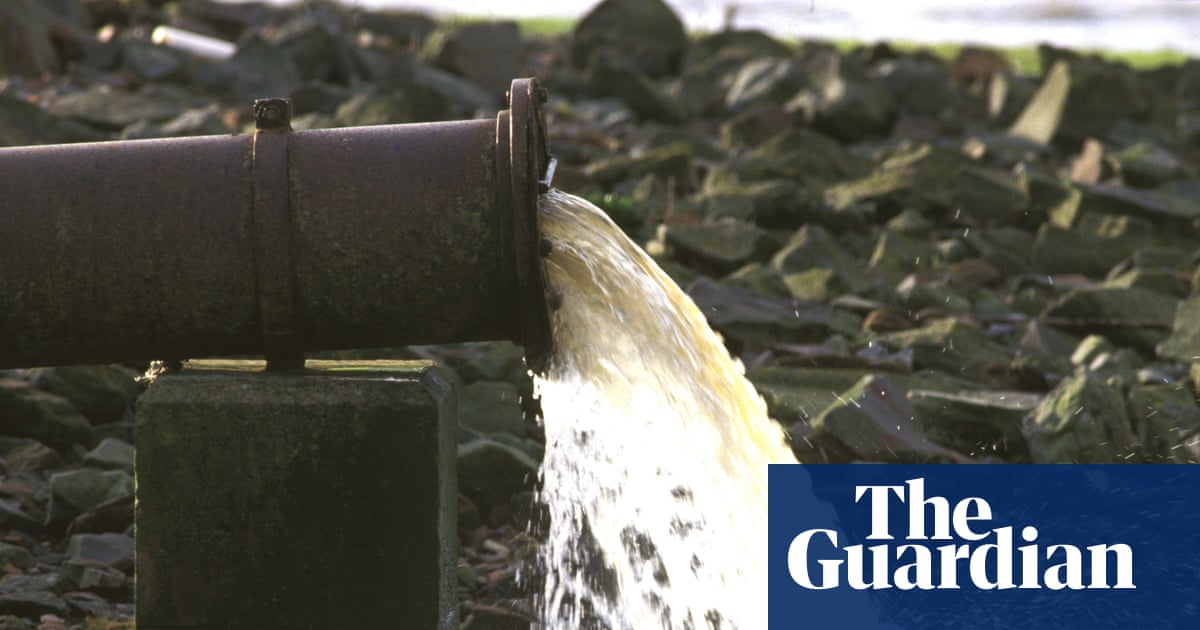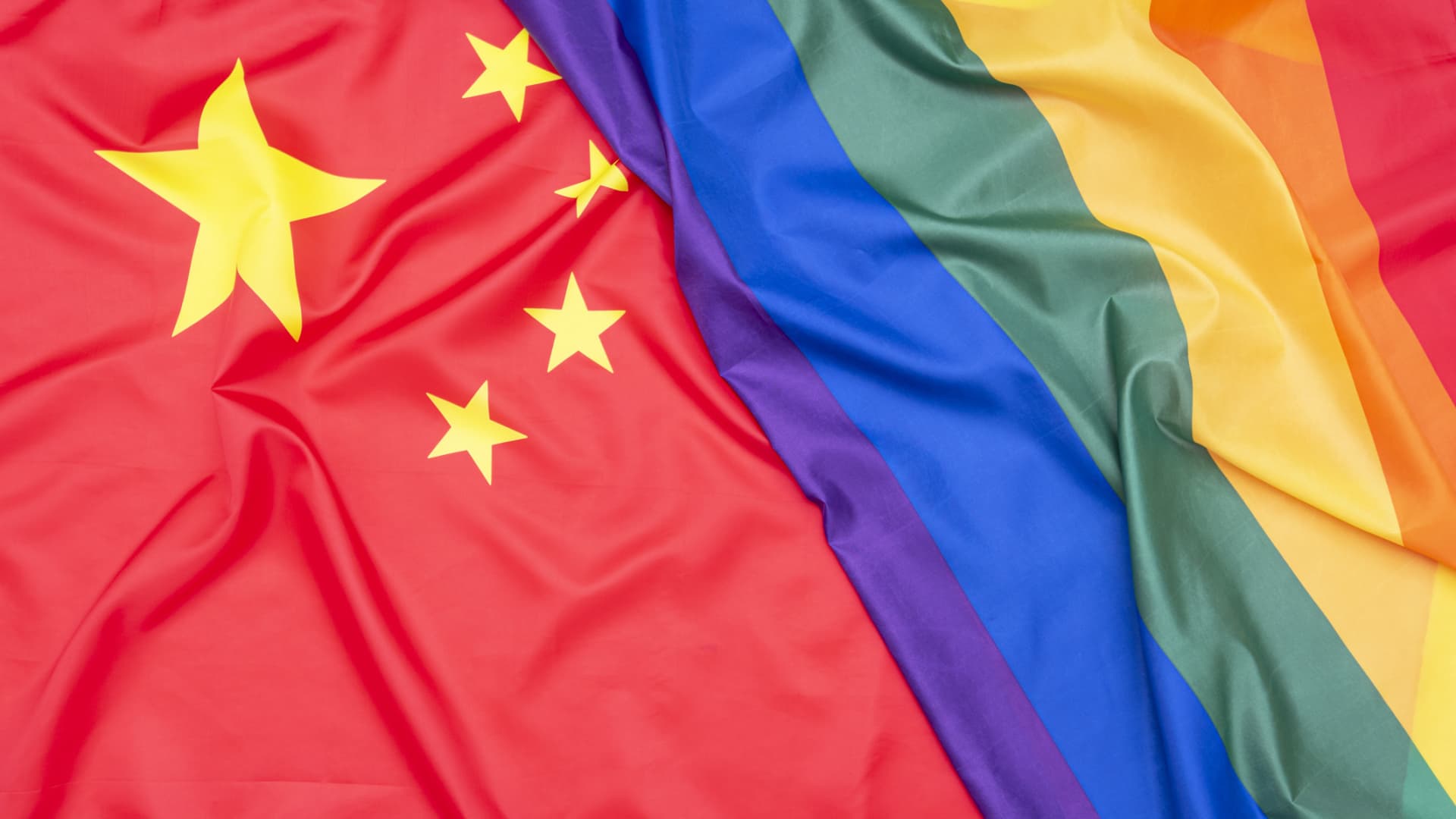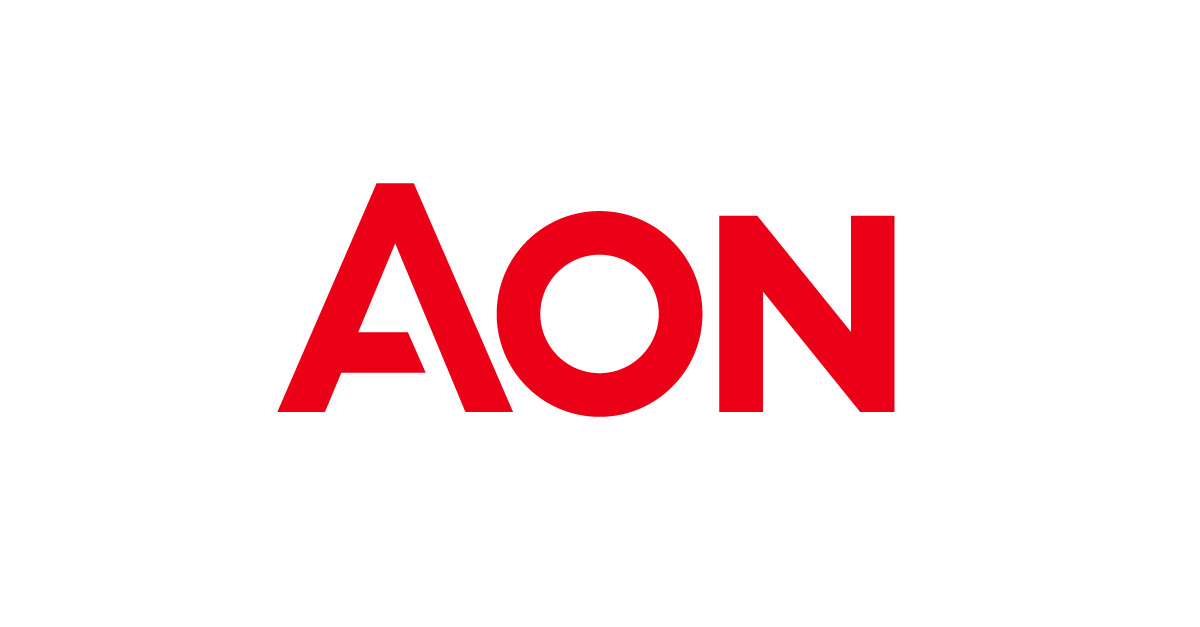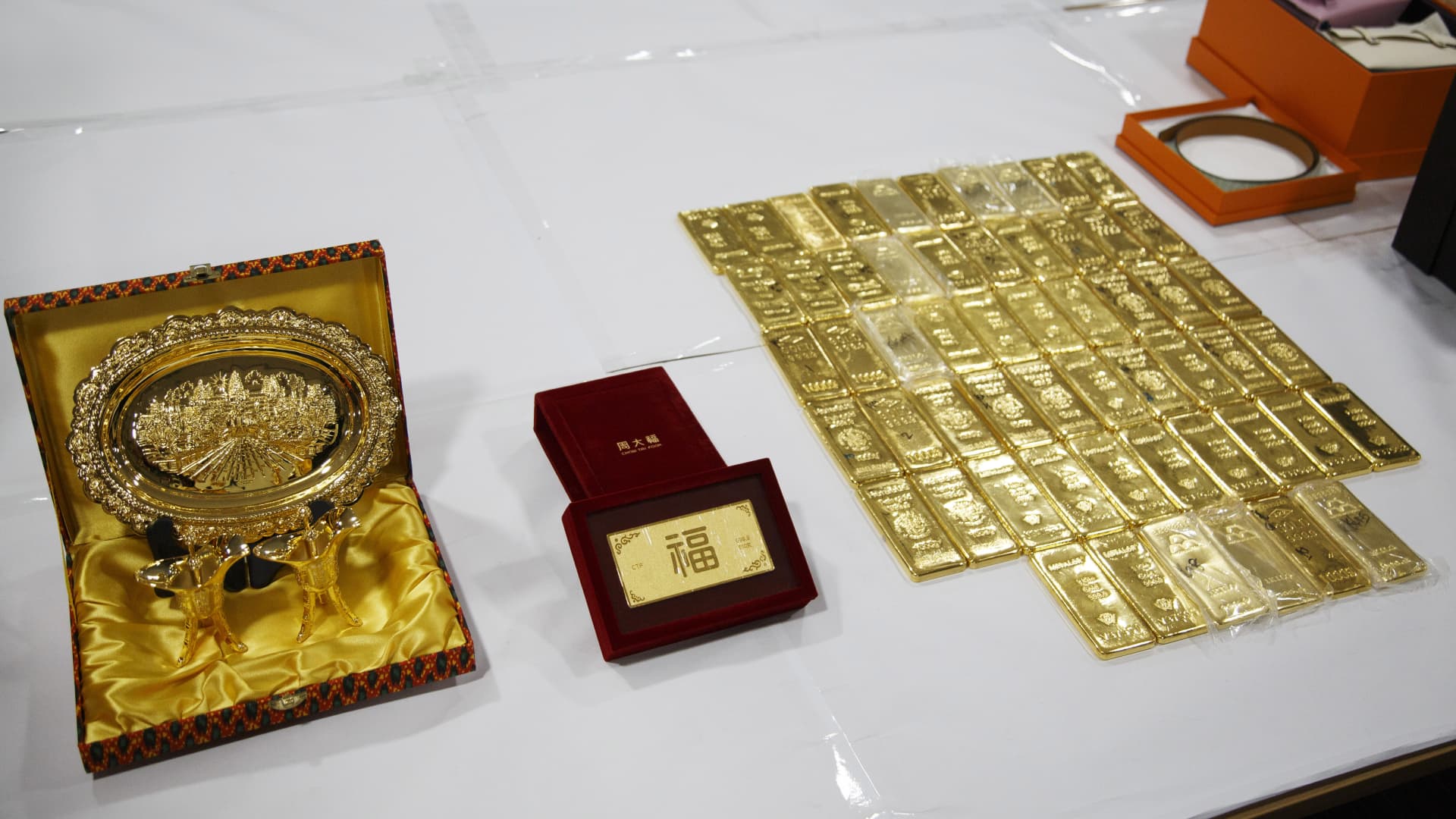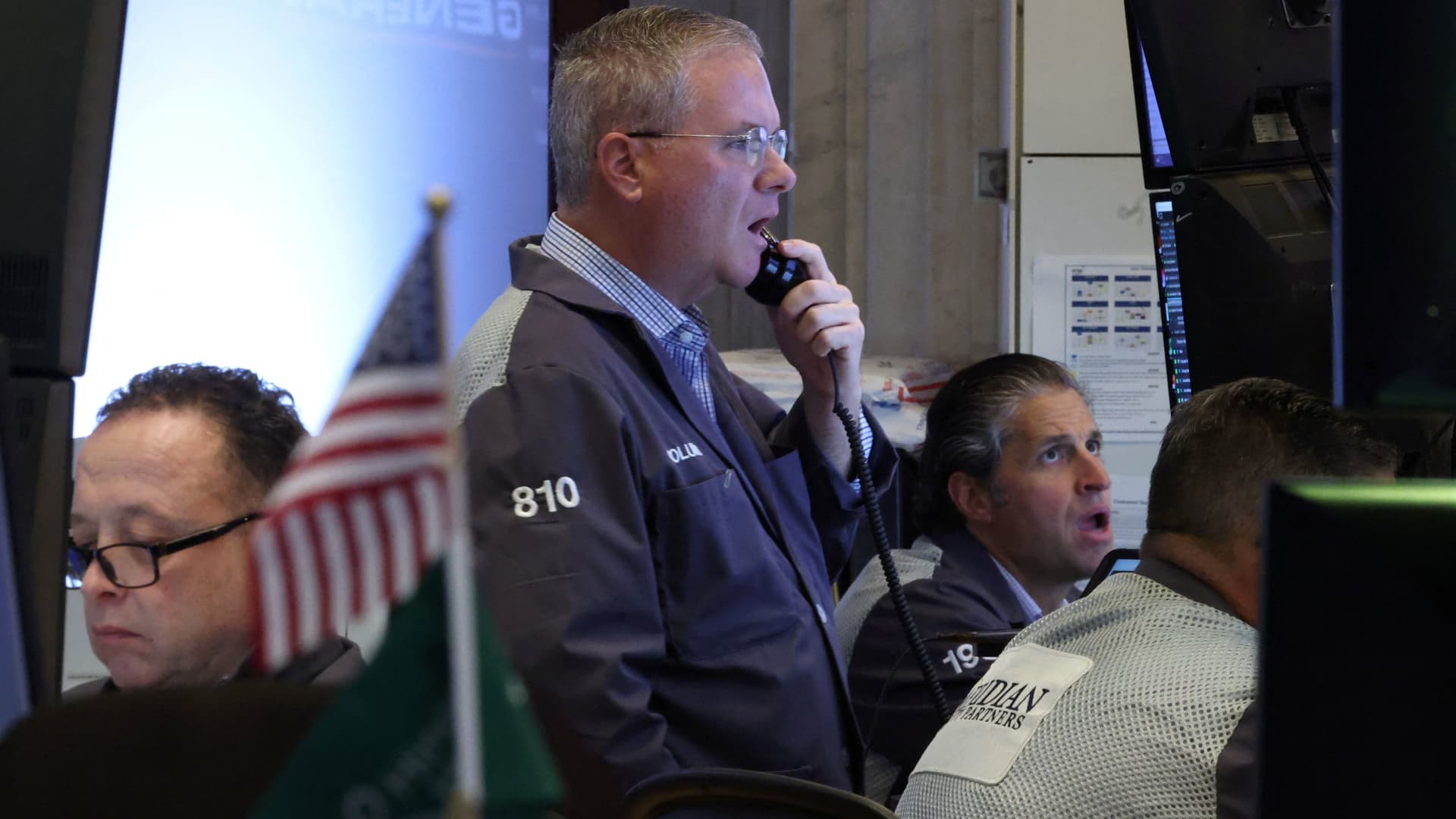Introduction
Acute type A aortic dissection (ATAAD) is a critical cardiovascular emergency defined by a tear in the inner layer of the aorta, allowing blood to enter the middle layer and create a false channel.1 Epidemiological data indicate that, without timely surgical intervention, the mortality risk increases by 1% to 2% each hour, with more than half of patients dying within 48 hours.1–4Emergency surgical repair is currently the only effective treatment.5,6 However, despite advances in surgical techniques, recent studies report that 30-day postoperative mortality remains high, highlighting the urgent need for effective preoperative risk assessment.7–9
ATAAD pathobiology involves a surge of systemic inflammation, endothelial injury, tissue hypoperfusion, and ischemia–reperfusion during surgery.10,11 Pro-inflammatory mediators such as interleukin-6 (IL-6), tumor necrosis factor-α (TNF-α), and C-reactive protein (CRP) amplify matrix degradation, impair microcirculatory flow, and increase the risk of mortality.10,11 Concomitantly, catabolic stress and hepatic reprioritization of protein synthesis depress serum albumin,12 while neuroendocrine stress leads to stress-induced lymphopenia, reflecting impaired cellular immunity.13,14 Each of these processes has been individually linked to adverse outcomes after aortic surgery. Based on this, we prespecified that lower CALLY would be associated with a higher risk of postoperative in-hospital mortality.
The C-reactive protein–albumin–lymphocyte (CALLY) index is a composite biomarker integrating inflammatory, nutritional, and immunologic status and has gained attention in cardiovascular research. Multiple prospective cohorts have shown an inverse association between CALLY and both all-cause and cardiovascular mortality in cardiovascular disease populations.15–17 In NHANES V, each 1-unit increase in CALLY was associated with an 18% lower risk of all-cause mortality.17 In coronary revascularization, patients in the lowest CALLY quartile had a 2.3-fold higher 5-year mortality than those in the highest quartile.15 However, whether CALLY predicts mortality in surgically managed acute type A aortic dissection (ATAAD) remains unknown.
Compared with traditional single-dimension inflammatory ratios such as the neutrophil-to-lymphocyte ratio (NLR) and platelet-to-lymphocyte ratio (PLR), CALLY combines CRP, albumin, and lymphocyte counts to capture complementary biology and has shown superior discrimination in other diseases while relying on routine laboratory tests.18,19 Notably, current ATAAD risk stratification paradigms often rely on postoperative or late-presenting biomarkers (eg, D-dimer >5 mg/L, lactate >4 mmol/L),20 which do not meet the time-sensitive needs of emergency preoperative triage. In contrast, CALLY provides a multidimensional snapshot of preoperative pathophysiology.
Accordingly, this study aimed to: (1) assess the association between preoperative CALLY and postoperative in-hospital mortality (POIM) in surgically treated ATAAD; and (2) develop a preoperative risk prediction model incorporating CALLY to enable early identification of high-risk patients and inform perioperative decision-making.
Materials and Methods
Study Population
This retrospective cohort study analyzed 522 consecutive ATAAD patients diagnosed at Union Hospital affiliated to Fujian Medical University between October 2015 and July 2024. Patients hospitalized between October 2015 and July 2022 were included in the training cohort, while those hospitalized between August 2022 and July 2024 were included in the external validation cohort. A predictive model was constructed, and a nomogram was plotted based on the training cohort. Internal validation was performed using the K-fold cross-validation technique, and external validation was conducted using regression equations developed from the training cohort.21
Data Collection
Diagnosis was confirmed by computed tomography angiography (CTA) and/or magnetic resonance imaging (MRI) according to the 2022 ESC Guidelines on Aortic Diseases. Clinical data were extracted from electronic medical records using a standardized case report form, including:
Demographics: Age, sex, pre-existing hypertension (defined as systolic BP ≥140 mmHg or antihypertensive use).Emergency Department Workup: Blood samples collected via antecubital venipuncture within 30 minutes of admission for:Hematological profiling: White blood cell (WBC), neutrophil, monocyte, platelet, and lymphocyte counts (Sysmex XN-9000 analyzer) Biochemical profiling: Random glucose, troponin I (TNI; ARCHITECT STAT assay), creatine kinase (CK),CRP; immunoturbidimetry, albumin (bromocresol green method), D-dimer (immunofluorescence), uric acid (UA; enzymatic colorimetry), fibrinogen (Clauss method), serum creatinine (modified Jaffe method).
The CALLY index was calculated as:
CALLY Index=Albumin x lymphocyte count/(CRP x 10)
Inclusion criteria included adult patients 18 years of age and older who underwent ATAAD surgery. The exclusion criteria for this study were as follows: (1) patients with diseases that affect initial counts of blood cell populations and/or in-hospital mortality, such as malignancies, hematological disorders, and infectious diseases; (2) patients with severe organ dysfunction, such as hepatic or renal failure; (3) patients taking medications that may affect the parameters of the complete blood count (eg, chemotherapeutic agents, such as cyclophosphamide, methotrexate, etc).; (4) patients with suspected subclinical myocardial involvement (eg, chronic inflammation or history of acute infection); (5) patients using intra-aortic balloon counterpulsation pumps (IABP); and (6) patients with incomplete clinical data. The study was approved by the Ethics Committee of Fujian Medical University Affiliated Union Hospital (2020 KY 082).Ultimately, a total of 522 patients were enrolled in the study. Medical records were used to collect basic clinical characteristics, imaging manifestations, surgical data, and clinical outcomes of the subjects. Consent was obtained from all subjects and their legal guardians after providing them with relevant information. This study was a retrospective observational analysis of informed consent based on the principles outlined in the Declaration of Helsinki. We guaranteed the confidentiality and anonymity of all patient data, which were used only for data analysis purposes. Figure 1 illustrates the procedure for inclusion of patients.
|
Figure 1 Flowchart of Patient Enrollment.
|
Primary Endpoint
The primary endpoint was POIM, defined as all-cause death occurring during the index hospitalization following surgery, including patients discharged against medical advice due to irreversible clinical deterioration.
Surgical Protocol
All patients underwent standardized surgical management:
Cardiopulmonary Bypass (CPB) Establishment:Median sternotomy with bicaval venous cannulation (24–28Fr).Arterial inflow via femoral artery (18–20Fr) and right axillary artery (12–14Fr) cannulation.Myocardial Protection:Direct antegrade delivery of cold blood cardioplegia (4:1 blood:crystalloid ratio, 4°C) into coronary ostia.Maintenance of myocardial temperature <15°C via topical cooling.Circulatory Arrest Management:Initiation of hypothermic circulatory arrest (HCA) at nasopharyngeal temperature 25–28°C.Unilateral antegrade cerebral perfusion (uACP) via right axillary artery (10 mL·kg−1·min−1 at 20°C).Intermittent bilateral cerebral perfusion during frozen elephant trunk deployment:Left common carotid artery cannulation (8Fr) via side graft.Flow maintenance >800 mL/min with cerebral oximetry monitoring.
Aortic Reconstruction:Open distal anastomosis using quadrifurcated graft (26–30mm Gelweave).Frozen elephant trunk implantation (Cronus® stent-graft, 26–34mm diameter).Proximal reconstruction with mechanical valve conduit (St. Jude Medical 25–29mm).Reperfusion Strategy: Gradual rewarming (<0.5°C/min) during graft deairing.Modified ultrafiltration (MUF) for inflammatory mediator removal.
Statistical Methods
Statistical analysis was performed using IBM SPSS® 26.0 and R version 4.2.3. Continuous variables that followed a normal distribution were expressed as mean ± standard deviation (mean ± SD), while non-normally distributed data were expressed as median (P25, P75). Count variables are expressed as frequencies or percentages.Student’s t-tests were used to compare regularly distributed continuous variables between groups, whereas Mann–Whitney U-tests were used to examine information on continuous variables that did not conform to a normal distribution. The chi-square test or Fisher’s exact test was used to compare count data between groups. This was done by calculating the subject’s work characteristic curve (ROC) and selecting the threshold that maximized the sum of sensitivity and specificity.We adopted a prespecified stepwise adjustment strategy to clarify the independent association between the CALLY index and in-hospital mortality. The set of potential confounders was defined a priori based on clinical relevance and literature. We used LASSO regression analysis to identify independent predictors of all-cause mortality (P<0.2) and constructed column-line plots. Logistic regression models were used to evaluate the predictive efficacy of the CALLY index for mortality. Furthermore, we evaluated the predictive performance of the nomogram by calculating the area under ROC curve AUC in the training cohort. Internal validation was performed using 5-fold cross-validation, while external validation utilized the same formula applied to the validation cohort over a time period. Calibration curves were used to assess the consistency between predicted probabilities and observed outcomes.Statistical significance was defined as P<0.05.
Results
Baseline Characteristics of the Study Population
After excluding ineligible patients, 522 surgically treated ATAAD patients (395males and 127 females) were enrolled between October 2015 and July 2024 (Figure 1). The cohort had a mean age of 52.24 years (standard deviation [SD] 11.94). During hospitalization, 55 patients experienced in-hospital mortality. A comprehensive summary of baseline characteristics stratified by CALLY quartiles is presented in Table 1. The CALLY index was categorized into four groups based on quartile thresholds: Q1: <0.187; Q2: 0.187–0.580; Q3: 0.580–0.905; and Q4: ≥0.905.
 |
Table 1 Baseline Characteristics of Patients by CALLY Quartile Groups
|
Association Between CALLY Index and in-Hospital Outcomes
Table 2 presents the in-hospital outcomes stratified by preoperative CALLY index quartiles. There were no significant differences in length of hospital stay among the four CALLY quartile groups (P=0.073). However, significant differences were observed in the incidence of gastrointestinal hemorrhage, acute kidney injury (AKI), and POIM across the quartiles. Patients in the lowest CALLY quartile (Q1) had the highest incidences of gastrointestinal hemorrhage (11.45%), AKI (32.82%), and POIM (26.72%), whereas those in the highest quartile (Q4) had the lowest incidences (2.31%, 9.23%, and 1.54%, respectively; All P<0.001). No significant difference in length of stay across CALLY quartiles.
 |
Table 2 In-Hospital Outcomes Stratified by Preoperative CALLY
|
Preoperative CALLY Index Shows Superior Predictive Performance for Mortality vs Individual Biomarkers
ROC curves were utilized to evaluate the predictive performance of preoperative CALLY index, lymphocyte count, albumin, and CRP for POIM. The results demonstrated significant predictive capacity of all analyzed parameters for postoperative mortality. Notably, the CALLY index exhibited the highest discriminative power for mortality prediction (AUC = 0.820,P<0.001), outperforming individual biomarkers (Figure 2).
 |
Figure 2 ROC Curve Analysis Evaluating the Predictive Value of Lymphocyte Count, CRP, Albumin, and the CALLY Index for Postoperative In-Hospital Mortality in ATAAD Patients. The ROC curves compare the discriminative ability of individual biomarkers and the composite CALLY score for predicting postoperative in-hospital mortality. The x-axis represents 1-specificity (false positive rate) and the y-axis represents sensitivity (true positive rate). Each curve demonstrates the trade-off between sensitivity and specificity at different threshold values. The area under the curve (AUC) values are shown in parentheses: CALLY score (blue line, AUC=0.820), C-reactive protein (red line, AUC=0.744), albumin (green line, AUC=0.587), and lymphocyte count (purple line, AUC=0.683). The diagonal grey line represents the line of no discrimination (AUC=0.500), equivalent to random chance. The CALLY score demonstrated superior discriminative performance compared with individual biomarkers, with an AUC significantly greater than 0.5 (P<0.05). AUC values closer to 1.0 indicate better discriminative ability, while values closer to 0.5 suggest poor discrimination.
|
Subgroup Analysis
To validate the consistency of the association between CALLY and in-hospital mortality, subgroup analyses were performed. Interaction analyses revealed no significant interactions between subgroups stratified by age, sex, BMI, hypertension, diabetes, coronary heart disease, Systolic Blood Pressure(SBP), Diastolic Blood Pressure(DBP), smoking, and alcohol consumption (P>0.05 for all variables, including sex, smoking status, drinking habits, age groups, hypertension, and diabetes). The results are shown in Table 3. In conclusion, the CALLY index can serve as an effective predictor of mortality in patients undergoing surgery for type A aortic dissection, with consistent clinical predictive significance across various clinical subgroups.
 |
Table 3 Subgroup Analysis of the Associations Between Preoperative CALLY and in-Hospital Mortality
|
CALLY Index Serves as an Independent Predictor of Postoperative Mortality in ATAAD Patients
To avoid multicollinearity, albumin, lymphocyte count, and CRP were excluded from the analysis. The final LASSO-derived model included prehospital emergency care, PT, urea, CK, TNI, lactate, and the CALLY index. Univariate logistic regression revealed that prehospital emergency care (OR = 5.737, 95% CI: 1.808–18.208, P=0.003) and CALLY index (OR = 0.131, 95% CI: 0.110–0.199, P<0.001) were associated with significantly reduced mortality risk, whereas PT (OR = 1.226), urea (OR = 1.175), TNI (OR = 1.136), CK (OR = 1.000), and lactate (OR = 1.252) significantly increased mortality risk (all P< 0.05). In multivariate analysis adjusted for potential confounders, only prehospital emergency care (OR = 4.707, 95% CI: 0.947–23.386, P=0.058), lactate (OR = 1.225, 95% CI: 1.133–1.324, P<0.001), and the CALLY index (OR = 0.048, 95% CI: 0.014–0.162, P<0.001) retained statistical significance, confirming their roles as independent predictors (Table 4).
 |
Table 4 Univariate and Multivariate Logistic Regression Analyses of POIM and Clinical Candidate Predictors
|
The CALLY index demonstrated a robust inverse association with mortality risk across multivariate logistic regression models. In the unadjusted model (Model 1), the OR for CALLY was 0.131 (95% CI: 0.110–0.199, P<0.001). After partial adjustment for demographic variables (age, sex, BMI, height, weight) in Model 2, the OR increased to 0.091 (95% CI: 0.019–0.428, P=0.002). Full adjustment in Model 3, incorporating heart rate, blood pressure, serum potassium, sodium, and left ventricular ejection fraction (LVEF), yielded a stable OR of 0.059 (95% CI: 0.01–0.336, P=0.001). Across all models, the CALLY index remained a protective factor against all-cause mortality (P<0.05) (Table 5).
 |
Table 5 Association Analysis of the CALLY Index with in-Hospital Mortality Across Adjusted Models
|
Development of a CALLY Index-Based Nomogram
This study employed a multistage variable screening strategy to optimize the construction of the predictive model. First, univariate logistic regression analysis (with a lenient significance threshold of α=0.2) was performed for preliminary screening of predictors, identifying 31 potential variables, including sex, age, LVEF, height, weight, length of hospital stay, platelet count, white blood cell count, PT, N-terminal pro-B-type natriuretic peptide (NT-proBNP), lactate dehydrogenase (LDH), urea, CK, TN, lactate, and the CALLY index. Subsequently, the Least Absolute Shrinkage and Selection Operator (LASSO) regression algorithm was applied for feature selection. The LASSO regression model achieved optimal performance when the regularization parameter λ was set to 0.031 (based on the minimum criteria of cross-validated error), ultimately retaining seven critical variables: prehospital emergency care,PT, urea, CK, TNI, lactate, and the CALLY index (Figure 3A and B).
 |
Figure 3 LASSO regression analysis for variable selection in acute type A aortic dissection (ATAAD) patients. (A) Cross-validation curve for LASSO regression model. The x-axis shows log(λ) and the y-axis the mean binomial deviance (red dots) with ±1 SE error bars (gray). The numbers along the top indicate the count of non-zero coefficients at each λ. Two vertical dotted lines mark the cross-validated choices: λ.min (the value yielding the lowest mean deviance) and λ.1se (the most regularized model whose deviance is within one standard error of the minimum). In this study, we prioritized discrimination and selected the optimal penalty as λ.min=0.0308. (B) Variable coefficient trajectory plot. Each colored trajectory corresponds to one candidate variable and depicts how its standardized coefficient changes as log(λ) increases. As the penalty strengthens, coefficients shrink toward zero; variables whose coefficients reach zero at a given λ are excluded from the model. The sign of each path indicates the direction of association with the outcome, and earlier shrinkage to zero suggests weaker or more redundant signals. The vertical dotted lines match those in Panel A. At λ.min=0.0308, the model retained 7 predictors (non-zero coefficients), which were subsequently entered into the multivariable logistic model and the nomogram.
|
A POIM prediction nomogram was developed using predictors selected by LASSO regression: prehospital emergency care, PT, urea, TNI, Lac, CK, and the CALLY index (Figure 4). Each predictor was assigned a score on the “Points” axis proportional to its regression coefficient. For example, lactate >4 mmol/L contributed 25 points, whereas a CALLY index <0.1 contributed 40 points. The total score—obtained by summing all individual scores—maps to the “Probability of Mortality” axis, yielding predicted probabilities from 0% to 90%.
 |
Figure 4 Nomogram Based on the CALLY Index for Discrimination of All-Cause Mortality. The nomogram integrates multiple clinical variables to provide individualised risk prediction for all-cause mortality. To use the nomogram, locate the patient’s value for each variable on the corresponding axis and draw a vertical line upward to the “Points” axis to determine the points assigned for that variable. The points for all variables are summed to obtain the “Total Points” score, which corresponds to the predicted probability of death shown on the bottom scale. The variables included are: out-of-hospital emergency care (dichotomous: Yes/No), prothrombin time (PT, seconds), urea (mmol/L), troponin I (TNI, ng/mL), lactate (Lac, mmol/L), creatine kinase (CK, U/L), and CALLY score (0–18 points). The total points range from 0 to 160, corresponding to death probabilities ranging from 0.2 to 0.8. Higher total point scores indicate increased risk of mortality.
|
To provide an overall assessment of predictive performance and to benchmark modeling strategies, we subsequently compared the nomogram based on conventional variable screening with a CALLY-guided model using ROC analysis (Figure 5). Model 1 included variables with P<0.05 in univariable analyses and showed good discrimination, with a smoothed ROC AUC of 0.81 (95% CI, 0.75–0.88). Building on this, Model 2 treated the CALLY index as a core predictor and applied LASSO regularization for automated selection among all candidate variables. The ROC curve for Model 2 consistently exceeded that of Model 1, with an AUC of 0.85 (95% CI, 0.79–0.91). Across most false-positive-rate ranges, Model 2 achieved higher sensitivity at comparable FPRs, indicating that the CALLY-guided LASSO approach better integrates heterogeneous information while limiting overfitting, thereby providing stronger overall discrimination and enhanced clinical utility.
 |
Figure 5 Discrimination performance of two modelling strategies: Univariable-screened Multivariable Model Versus CALLY-guided LASSO Model. ROC curves are displayed after loess smoothing for two prespecified models: the multivariable model derived by entering predictors with P<0.05 in univariable analyses (Model 1, blue), which includes the following variables: tricuspid regurgitation, urea, D-dimer index (DDI), hemoglobin, international normalized ratio (INR), aid, N-terminal pro b-type natriuretic peptide (NT-proBNP), total protein, age, TNI, and CRP; and the CALLY-guided model obtained via LASSO regularization across all candidate predictors (Model 2, red). The smoothed lines depict the trend of sensitivity (true positive rate) over the full range of 1–specificity (false positive rate); the grey dashed diagonal denotes no discrimination. AUC values with 95% confidence intervals are shown within the panel: Model 1, AUC 0.811 (95% CI 0.747–0.876); Model 2, AUC 0.849 (95% CI 0.792–0.907). Across most false positive rate ranges, the CALLY-guided LASSO model demonstrates higher sensitivity at comparable false positive rates, indicating superior overall discrimination.
|
Nomogram Validation
A 5-fold internal cross-validation was conducted 400 times in the training cohort and revealed an average AUC value of 0.849 (95% CI: 0.792–0.907) for internal validation, as shown by the red ROC curve in Figure 5. The external validation yielded an AUC value of 0.869 (95% CI: 0.808–0.929) demonstrating the robust accuracy of the model across different cohorts (Figure 6). These results highlight the model’s effectiveness in predicting outcomes reliably. Figure 7 display the results of the Hosmer-Lemeshow (H-L) test, yielding P-values of 0.42 and 0.498, respectively, neither of which reached statistical significance. This indicates that the predicted probabilities are consistent with the actual probabilities, suggesting good model fit and reliability. This consistency further supports the model’s effectiveness in clinical application, enhancing predictive accuracy for POIM.
 |
Figure 6 ROC curve for external validation of the predictive model. The curve illustrates the relationship between sensitivity (true positive rate) and 1-specificity (false positive rate). AUC is reported as 0.869 with a 95% confidence interval of 0.808 to 0.929, indicating robust discriminatory performance of the model in identifying high-risk patients. The diagonal dashed line represents the line of no discrimination (AUC = 0.5).
|
 |
Figure 7 Calibration curves for the nomogram with Hosmer-Lemeshow (H-L) test. (A) Training cohort; (B) validation cohort. The X-axis shows the predicted probability of in-hospital mortality, and the Y-axis shows the observed outcomes. H-L tests show good consistency in both two cohorts, with p values of 0.420 and 0.498, respectively.
|
Discussion
ATAAD is a critical cardiovascular emergency with high POIM rates. Although many studies have examined postoperative outcomes in ATAAD patients,22,23 this is the first to assess the relationship between the CALLY index and POIM. We retrospectively analyzed data from 522 patients who underwent emergency surgery for ATAAD at our institution. The results of this study indicate that the CALLY index is a good predictor for identifying high-risk POIM patients with ATAAD. ROC curve analysis revealed that CALLY is a better predictor of in-hospital mortality compared to lymphocyte count, C-reactive protein, or albumin alone. Patients with ATAAD and lower preoperative CALLY levels had an increased risk of in-hospital mortality, consistent with previous studies.15–17 Furthermore, after adjusting for potential confounders, lower preoperative CALLY in ATAAD patients was associated with an increased risk of in-hospital mortality. Subgroup analysis showed no significant interactions between patient subgroups. Finally, a preoperative risk assessment nomogram model was constructed based on these indicators. We divided the database into a training cohort and a time-period validation cohort according to the patients’ admission dates (2015 to 2022 compared to 2022 to 2024). This approach aligns with a large-sample study, enhancing the predictive capability of the nomogram.21 Furthermore, the nomogram underwent rigorous validation through various methods, including K-fold cross-validation, confirming its robustness.
The CALLY index is a composite biomarker that integrates inflammatory burden (C-reactive protein), nutritional status (albumin), and immune competence (lymphocyte count). Prior studies have shown that it outperforms several traditional inflammatory markers in prognostic discrimination for malignancies such as hepatocellular carcinoma and gastric cancer.16,19 Zhu et al16 reported inverse associations between the CALLY index and all-cause, cardiovascular, and cancer-specific mortality among patients with cancer, indicating that lower values are linked to higher mortality risk. Consistently, studies in colorectal cancer have demonstrated that higher CALLY values are associated with longer overall survival.19 In the cardiovascular domain, the CALLY index has been validated as an important prognostic indicator in patients with coronary artery disease undergoing percutaneous coronary intervention; Ji et al15 found that higher CALLY values were protectively associated with both short- and long-term major adverse cardiovascular events (MACE) after primary PCI for ST-elevation myocardial infarction, and that greater values correlated with less severe coronary lesions. Moreover, beyond oncology and cardiology, the CALLY index is inversely associated with all-cause mortality in patients receiving maintenance hemodialysis, supporting its utility for mortality risk stratification in this population.24
This study demonstrates that a higher CALLY index independently protects against POIM in ATAAD. By combining CRP, albumin, and lymphocyte count, CALLY captures concurrent disturbances in inflammation, nutrition, and immunity more comprehensively than any single marker.Mechanistic evidence supports this association. Albumin is tightly linked to hepatic synthesis, systemic metabolism, and vascular function.25,26 It maintains colloid osmotic pressure, exerts antioxidant and anti-inflammatory effects, and modulates platelet activation, thereby mitigating inflammation, ischemia–reperfusion injury, and vascular dysfunction.27,28 Its redox-active Cys-34 residue scavenges reactive oxygen and nitrogen species.25,26 In ATAAD, low albumin (<32 g/L) inversely correlates with aortic wall oxidative damage, likely because exposure of medial collagen and elastin promotes ROS release and accelerates albumin degradation.13 CRP, an acute-phase protein, amplifies complement activation, phagocytosis, leukocyte function, and inflammatory signaling.29,30 Intimal tearing exposes the vessel wall to circulating blood, rapidly recruiting monocytes and neutrophils that release IL-6, IL-8, and TNF-α, sustaining a cytokine cascade.11,31,32 Lymphocytes provide layered defense via cellular and humoral immunity; in ATAAD, Th1/Th17 subsets may aggravate injury, whereas regulatory T cells and selected B-cell subsets may restrain progression.33
ATAAD pathobiology magnifies CALLY’s prognostic value. Dissection-induced mechanical stress activates NF-κB and increases IL-6 five- to eight-fold versus stable coronary disease; downstream JAK2/STAT3 signaling accelerates CRP synthesis while suppressing albumin transcription.12,34 The resulting inflammatory surge (often CRP >20 mg/L) coexists with hypoalbuminemia, and systemic inflammatory response syndrome further reduces hepatic albumin synthesis and increases catabolism.3,6 This pattern reflects uncontrolled inflammation, endothelial dysfunction, and evolving multiorgan injury, enhancing CALLY’s discrimination.35,36 Lymphopenia adds prognostic information by indicating stress glucocorticoid-induced apoptosis and IL-6-mediated myelosuppression, which raise infection risk.37–39
CALLY complements routine clinical indicators. Elevated lactate signals perfusion crisis and gut ischemia with endotoxin translocation and TLR4/MyD88-mediated SIRS.40–42 Prolonged prothrombin time denotes coagulopathy and portends adverse cardiovascular outcomes.43 Higher urea reflects metabolic stress and renal hypoperfusion and is associated with poor prognosis.44 Together, these variables delineate the coagulation–metabolic–immune axis underlying organ failure. Compared with traditional markers, CALLY captures multisystem compensatory capacity—albumin as hepatic reserve,45 lymphocytes as stress hematopoiesis,46 and CRP as inflammatory intensity —thereby identifying decompensation thresholds and suggesting actionable targets. Potential strategies include albumin support for hypoalbuminemia and selective IL-6 inhibition for hyperinflammation; resistin may exacerbate endothelial permeability via p38 MAPK and compound capillary leak.47
Practically, we integrated CALLY into a preoperative nomogram using only readily available variables, enabling rapid risk stratification in emergency settings. Limitations include the retrospective single-center design and modest sample size.
Overall, CALLY encapsulates ATAAD’s acute inflammatory, nutritional, and immune derangements and independently predicts POIM. Combined with standard clinical data, it offers a timely, low-cost tool for preoperative decision-making and a coherent framework for targeted perioperative care.
Conclusion
This study demonstrates that the preoperative CALLY index exhibits strong predictive efficacy for POIM in ATAAD patients. The constructed nomogram model provides a valuable tool for preoperatively identifying high-risk individuals. The clinical significance lies in its capacity to en able rapid risk stratification of multi-organ injury through routine laboratory parameters, thereby guiding time-sensitive surgical decision-making in emergency settings, which may ultimately reduce in-hospital mortality rates.
Data Sharing Statement
Full data set available from the corresponding author. However, reanalysis of the full data need be approved by Fujian Medical University Union Hospital.
Ethics Statement
The investigation conformed with the principles outlined in the Declaration of Helsinki and was approved by the Ethics Committee of Fujian Medical University Affiliated Union Hospital (2020 KY082) Informed consent was obtained from patients before this study.
Acknowledgments
The authors appreciate all subjects who participated in this study. We would also like to thank the hospital for supporting the data collection of this study.
Author Contributions
All authors made a significant contribution to the work reported, whether that is in the conception, study design, execution, acquisition of data, analysis and interpretation, or in all these areas; took part in drafting, revising or critically reviewing the article; gave final approval of the version to be published; have agreed on the journal to which the article has been submitted; and agree to be accountable for all aspects of the work.
Funding
This work was supported by grants from the Fifth Batch of Hospital Key Discipline Construction Projects (2022YYZDXK01).
Disclosure
The authors report no conflicts of interest in this work.
References
1. Evangelista A, Isselbacher EM, Bossone E, et al. Insights from the international registry of acute aortic dissection: a 20-year experience of collaborative clinical research. Circulation. 2018;137(17):1846–1860. doi:10.1161/CIRCULATIONAHA.117.031264
2. Erbel R, Aboyans V, Boileau C, et al. 2014 ESC guidelines on the diagnosis and treatment of aortic diseases: document covering acute and chronic aortic diseases of the thoracic and abdominal aorta of the adult. The task force for the diagnosis and treatment of aortic diseases of the european society of cardiology (ESC). Eur Heart J. 2014;35(41):2873–2926. doi:10.1093/eurheartj/ehu281
3. Feng Y, Ma X-T, Zhang X-X, et al. Clinical study of reoperation for acute type A aortic dissection. Front Cardiovasc Med. 2024;11. doi:10.3389/fcvm.2024.1340687
4. Teurneau-Hermansson K, Ede J, Larsson M, et al. Mortality after non-surgically treated acute type A aortic dissection is higher than previously reported. Eur J Cardiothorac Surg. 2024;65(2):ezae039. doi:10.1093/ejcts/ezae039
5. Czerny M, Grabenwöger M, Berger T, et al. EACTS/STS guidelines for diagnosing and treating acute and chronic syndromes of the aortic organ. Eur J Cardiothorac Surg. 2024;65(2):ezad426. doi:10.1093/ejcts/ezad426
6. Yang B, Malik A, Waidley V, et al. Short-term outcomes of a simple and effective approach to aortic root and arch repair in acute type A aortic dissection. J Thorac Cardiovasc Surg. 2018;155(4):1360–1370.e1. doi:10.1016/j.jtcvs.2017.11.089
7. Yan Y, Xu L, Zhang H, et al. Proximal aortic repair versus extensive aortic repair in the treatment of acute type A aortic dissection: a meta-analysis. Eur J Cardiothorac Surg. 2016;49(5):1392–1401. doi:10.1093/ejcts/ezv351
8. Fichadiya A, Gregory AJ, Kotha VK, et al. Extended-arch repair for acute type-A aortic dissection: perioperative and mid-term results. Eur J Cardiothorac Surg. 2019;56(4):714–721. doi:10.1093/ejcts/ezz071
9. Chen J, Bai Y, Liu H, et al. Prediction of in-hospital death following acute type A aortic dissection. Front Public Health. 2023;11(1143160). doi:10.3389/fpubh.2023.1143160
10. Huang X, Zhang G, Feng Y, et al. Developing and verifying an effective diagnostic model linked to immune infiltration in stanford type a aortic dissection. Front Biosci. 2024;29(9):318. doi:10.31083/j.fbl2909318
11. Bai Z, Gu J, Shi Y, et al. Effect of inflammation on the biomechanical strength of involved aorta in type A aortic dissection and ascending thoracic aortic aneurysm: an initial research. Anatol J Cardiol. 2018;20(2):85–92. doi:10.14744/AnatolJCardiol.2018.49344
12. Gu J, Hu J, Zhang H, et al. Time-dependent changes of plasma inflammatory biomarkers in type A aortic dissection patients without optimal medical management. J Cardiothorac Surg. 2015;10(3). doi:10.1186/s13019-014-0199-0
13. Wu Q, Zheng J, Lin J, et al. Preoperative blood urea nitrogen-to-serum albumin ratio for prediction of in-hospital mortality in patients who underwent emergency surgery for acute type A aortic dissection. Hypertens Res. 2024;47(7):1934–1942. doi:10.1038/s41440-024-01673-z
14. Hao X-B, Han Y, Ni E-R, et al. Potential metabolomic biomarkers for the identification and diagnosis of type A acute aortic dissection in patients with hypertension. Front Cardiovasc Med. 2022;9(1019598). doi:10.3389/fcvm.2022.1019598
15. Pan Y, Wu T-T, Deng C-J, et al. Association between the C-reactive protein-albumin-lymphocyte (CALLY) index and adverse clinical outcomes in CAD patients after PCI: findings of a real-world study. Rev Cardiovasc Med. 2024;25(4):111. doi:10.31083/j.rcm2504111
16. Zhu D, Lin Y-D, Yao Y-Z, et al. Negative association of C-reactive protein-albumin-lymphocyte index (CALLY index) with all-cause and cause-specific mortality in patients with cancer: results from NHANES 1999-2018. BMC Cancer. 2024;24(1):1499. doi:10.1186/s12885-024-13261-y
17. Han D, Wu L, Zhou H, et al. Associations of the C-reactive protein-albumin-lymphocyte index with all-cause and cardiovascular mortality among individuals with cardiovascular disease: evidence from the NHANES 2001-2010. BMC Cardiovasc Disord. 2025;25(1):144. doi:10.1186/s12872-025-04596-w
18. Xu Z, Tang J, Jin Y, et al. Associations of C-reactive protein-albumin-lymphocyte (CALLY) index with cardiorenal syndrome: insights from a population-based study. Heliyon. 2024;10(17):e37197. doi:10.1016/j.heliyon.2024.e37197
19. Yang M, Lin S-Q, Liu X-Y, et al. Association between C-reactive protein-albumin-lymphocyte (CALLY) index and overall survival in patients with colorectal cancer: from the investigation on nutrition status and clinical outcome of common cancers study. Front Immunol. 2023;14(1131496). doi:10.3389/fimmu.2023.1131496
20. Wang Y, Qiu S, Chen Y, et al. The postoperative platelet to creatinine ratio as a prognostic index of in-hospital mortality in patients with acute type a aortic dissection. Heart Surg Forum. 2023;26(6):E735–E739. doi:10.59958/hsf.6935
21. Wang S, Yang L, Ci B, et al. Development and validation of a nomogram prognostic model for SCLC patients. J Thorac Oncol. 2018;13(9):1338–1348. doi:10.1016/j.jtho.2018.05.037
22. Conzelmann LO, Weigang E, Mehlhorn U, et al. Mortality in patients with acute aortic dissection type A: analysis of pre- and intraoperative risk factors from the German registry for acute aortic dissection type A (GERAADA). Eur J Cardiothorac Surg. 2016;49(2):e44–52. doi:10.1093/ejcts/ezv356
23. Zhou Y, Fan R, Jiang H, et al. A novel nomogram model to predict in-hospital mortality in patients with acute type A aortic dissection after surgery. J Cardiothorac Surg. 2024;19(1):362. doi:10.1186/s13019-024-02921-6
24. Huang J, Hao J, Luo H, et al. Construction of a C-reactive protein-albumin-lymphocyte index-based prediction model for all-cause mortality in patients on maintenance hemodialysis. Ren Fail. 2025;47(1):2444396. doi:10.1080/0886022X.2024.2444396
25. Chubarov A, Spitsyna A, Krumkacheva O, et al. Reversible dimerization of human serum albumin. Molecules. 2020;26(1):108. doi:10.3390/molecules26010108
26. Taverna M, Marie A-L, Mira J-P, et al. Specific antioxidant properties of human serum albumin. Ann Intensive Care. 2013;3(1):4. doi:10.1186/2110-5820-3-4
27. Cao Y, Yao X. Acute albumin administration as therapy for intracerebral hemorrhage: a literature review. Heliyon. 2024;10(1):e23946. doi:10.1016/j.heliyon.2023.e23946
28. Ferrer R, Mateu X, Maseda E, et al. Non-oncotic properties of albumin. A multidisciplinary vision about the implications for critically ill patients. Expert Rev Clin Pharmacol. 2018;11(2):125–137. doi:10.1080/17512433.2018.1412827
29. Sproston NR, Ashworth JJ. Role of C-reactive protein at sites of inflammation and infection. Front Immunol. 2018;9(754). doi:10.3389/fimmu.2018.00754
30. Mouliou DS. C-reactive protein: pathophysiology, diagnosis, false test results and a novel diagnostic algorithm for clinicians. Diseases. 2023;11(4):132. doi:10.3390/diseases11040132
31. Gao H, Sun X, Liu Y, et al. Analysis of hub genes and the mechanism of immune infiltration in stanford type a aortic dissection. Front Cardiovasc Med. 2021;8(680065). doi:10.3389/fcvm.2021.680065
32. Qin C, Zhang H, Gu J, et al. Dynamic monitoring of platelet activation and its role in post-dissection inflammation in a canine model of acute type A aortic dissection. J Cardiothorac Surg. 2016;11(1):86. doi:10.1186/s13019-016-0472-5
33. Nh R, Em A. Secondary lymphoid organs: responding to genetic and environmental cues in ontogeny and the immune response. J Immunol. 2009;183(4). doi:10.4049/jimmunol.0804324
34. Lian R, Zhang G, Yan S, et al. Identification of molecular regulatory features and markers for acute type a aortic dissection. Comput Math Methods Med. 2021;2021(6697848). doi:10.1155/2021/6697848
35. Zhao H, Yao Y, Zong C, et al. Serum fibrinogen/albumin ratio and early neurological deterioration in patients with recent small subcortical infarction. Ann Med. 2024;56(1):2396072. doi:10.1080/07853890.2024.2396072
36. Pan S, Du K, Liu S, et al. Albumin adjuvant therapy for acute ischemic stroke with large vessel occlusion (AMASS-LVO): rationale, design, and protocol for a Phase 1, open-label, clinical trial. Front Neurol. 2024;15(1455388). doi:10.3389/fneur.2024.1455388
37. Singh SK, Prislovsky A, Ngwa DN, et al. C-reactive protein lowers the serum level of IL-17, but not TNF-α, and decreases the incidence of collagen-induced arthritis in mice. Front Immunol. 2024;15(1385085). doi:10.3389/fimmu.2024.1385085
38. Trzeciak S, Dellinger RP, Chansky ME, et al. Serum lactate as a predictor of mortality in patients with infection. Intensive Care Med. 2007;33(6):970–977. doi:10.1007/s00134-007-0563-9
39. Liu X-Y, Zhang X, Zhang Q, et al. The value of CRP-albumin-lymphocyte index (CALLY index) as a prognostic biomarker in patients with non-small cell lung cancer. Support Care Cancer. 2023;31(9):533. doi:10.1007/s00520-023-07997-9
40. Ji Y, Qiu J, Zhang K, et al. Comparing unilateral and bilateral cerebral perfusion during total arch replacement for acute type A aortic dissection. Interdiscip Cardiovasc Thorac Surg. 2024;40(1):ivae205. doi:10.1093/icvts/ivae205
41. Li J, Wang X, Zhu K, et al. Perioperative dynamic changes of systemic inflammatory response, gut injury, and hypoxemia in patients with acute type-A aortic dissection: an observational case-control study. J Thorac Dis. 2025;17(2):1054–1063. doi:10.21037/jtd-2025-141
42. Xie X, Fu X, Zhang Y, et al. U-shaped relationship between platelet-lymphocyte ratio and postoperative in-hospital mortality in patients with type A acute aortic dissection. BMC Cardiovasc Disord. 2021;21(1):569. doi:10.1186/s12872-021-02391-x
43. Fang J, Alderman M. Serum uric acid and cardiovascular mortality the NHANES I epidemiologic follow-up study, 1971-1992. National Health Nutrition Examination Survey. 2000;2000.
44. Inoue S, Suzuki-Utsunomiya K, Okada Y, et al. Reduction of immunocompetent T cells followed by prolonged lymphopenia in severe sepsis in the elderly. Crit Care Med. 2013;41(3):810–819. doi:10.1097/CCM.0b013e318274645f
45. Vaduganathan M, Ambrosy AP, Greene SJ, et al. Predictive value of low relative lymphocyte count in patients hospitalized for heart failure with reduced ejection fraction: insights from the EVEREST trial. Circ Heart Fail. 2012;5(6):750–758. doi:10.1161/CIRCHEARTFAILURE.112.970525
46. Nakashima K, Haruki K, Kamada T, et al. Usefulness of the C-Reactive Protein (CRP)-albumin-lymphocyte (CALLY) index as a prognostic indicator for patients with gastric cancer. Am Surg. 2024;90(11):2703–2709. doi:10.1177/00031348241248693
47. Alcaraz-Quiles J, Casulleras M, Oettl K, et al. Oxidized albumin triggers a cytokine storm in leukocytes through p38 mitogen-activated protein kinase: role in systemic inflammation in decompensated cirrhosis. Hepatology. 2018;68(5):1937–1952. doi:10.1002/hep.30135
